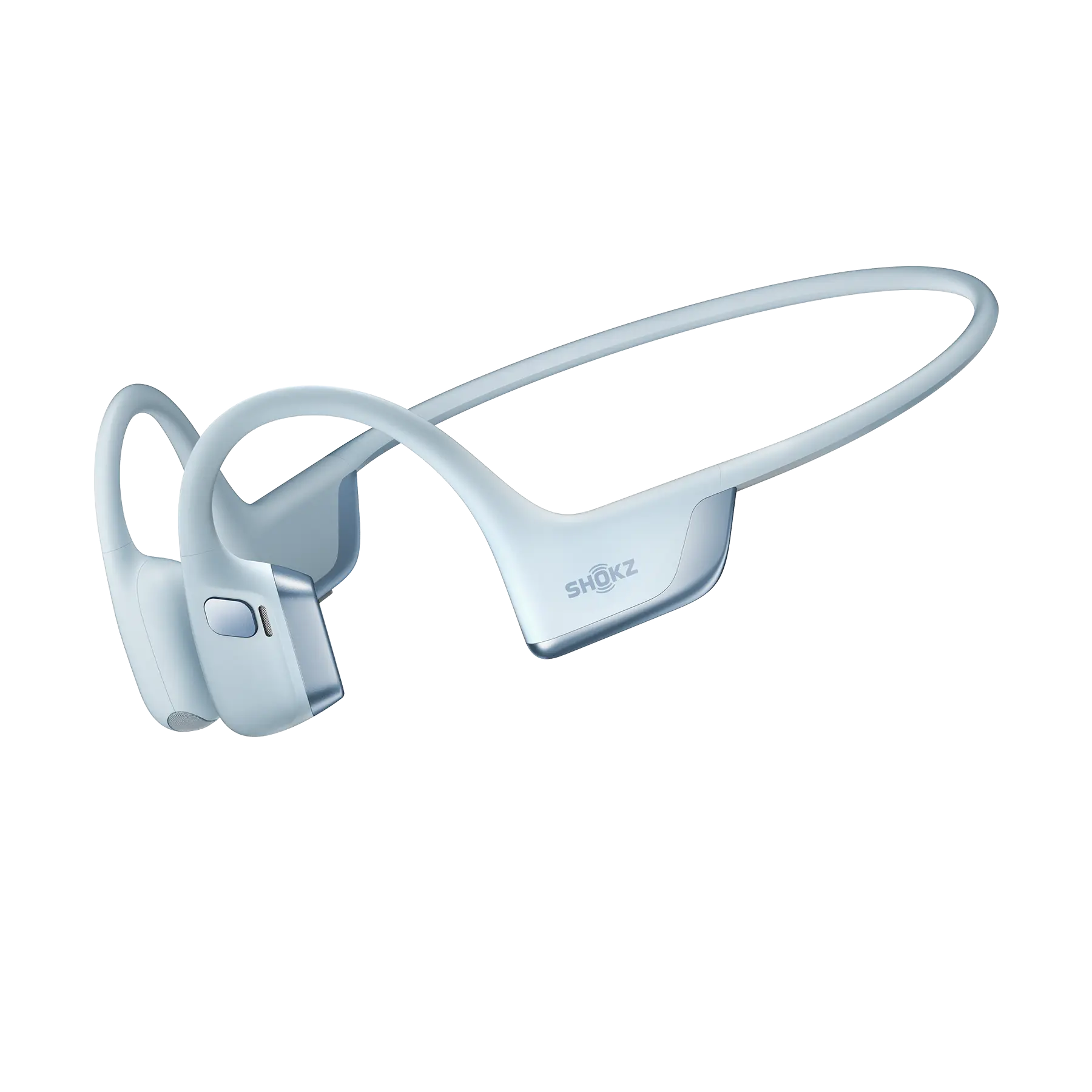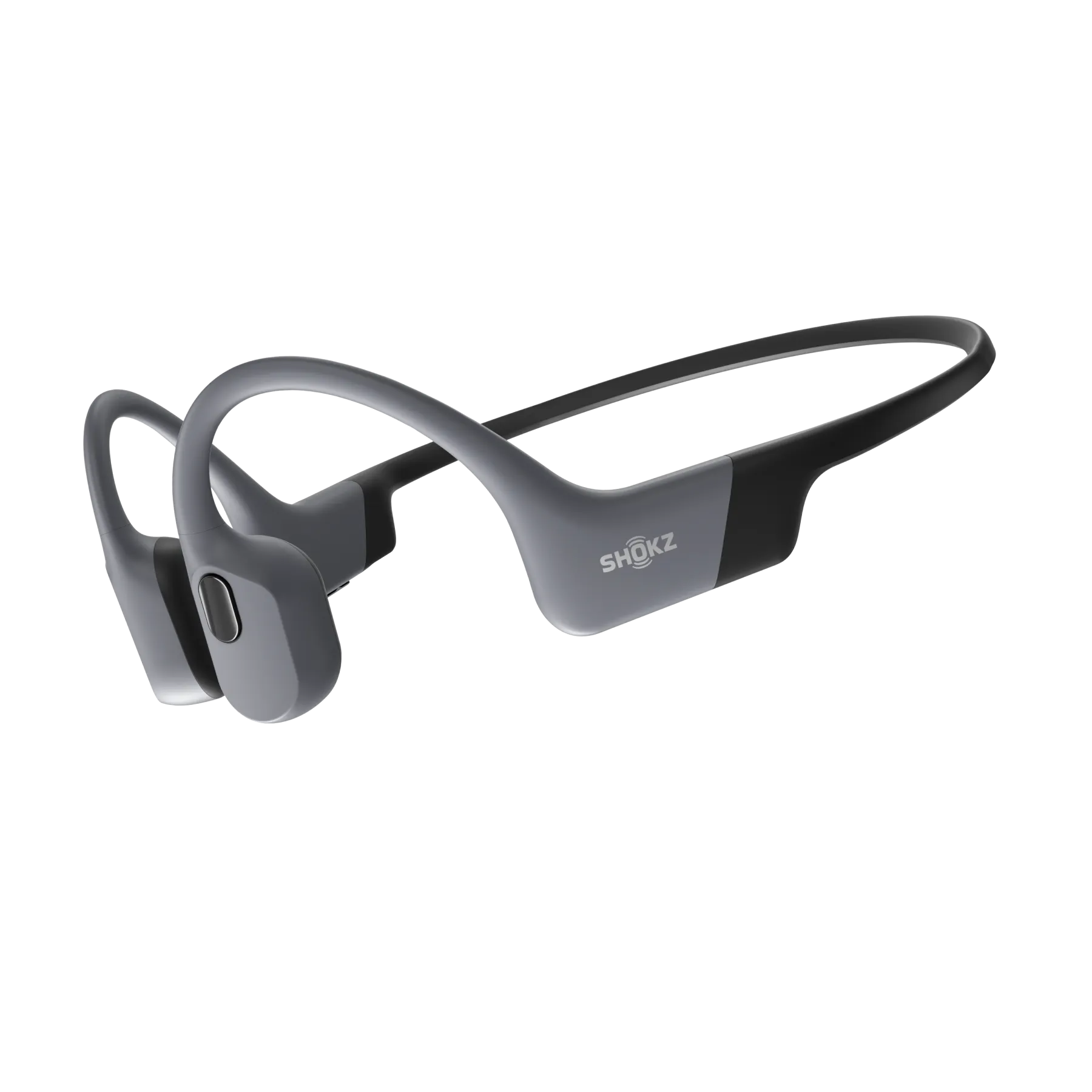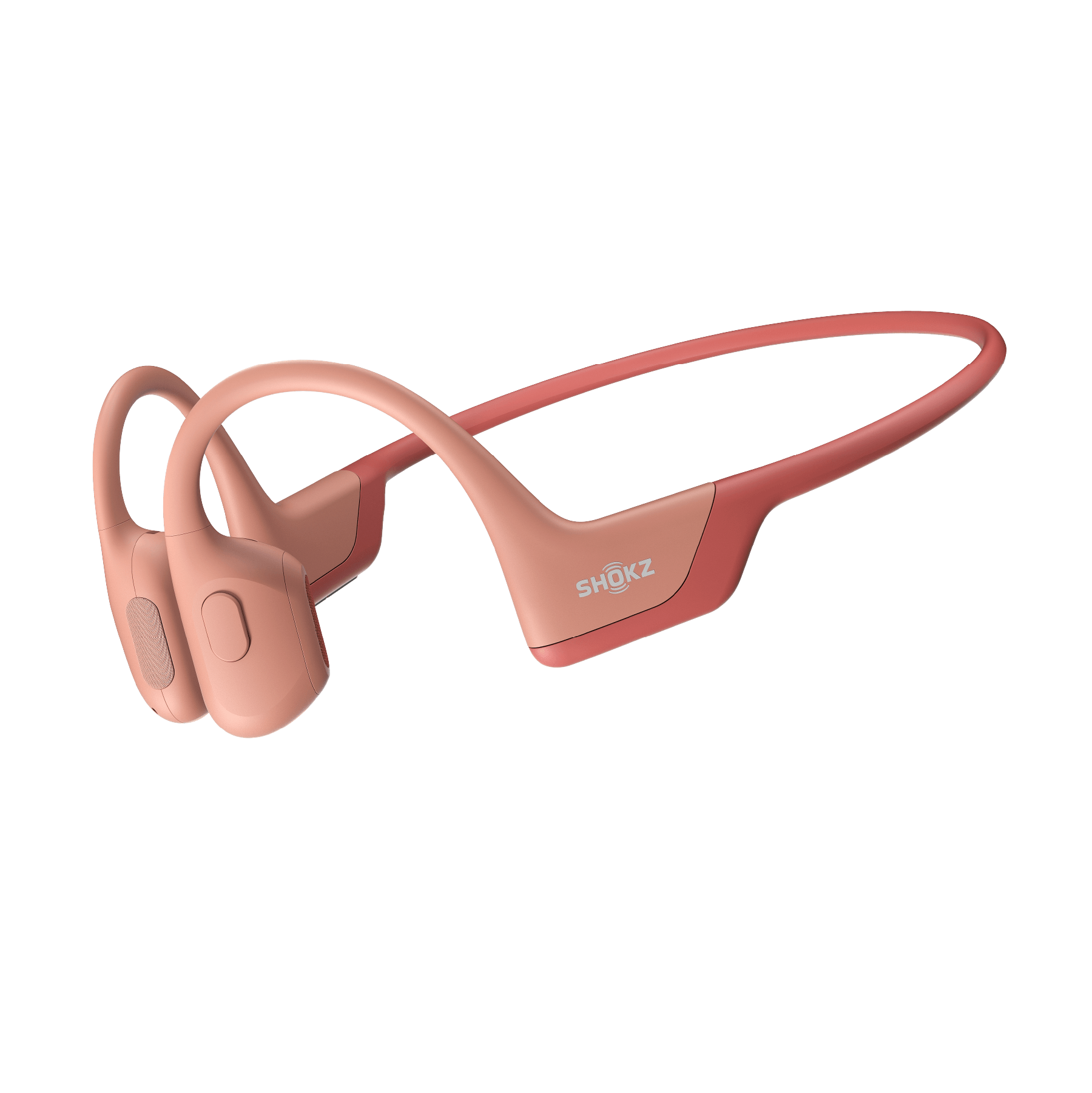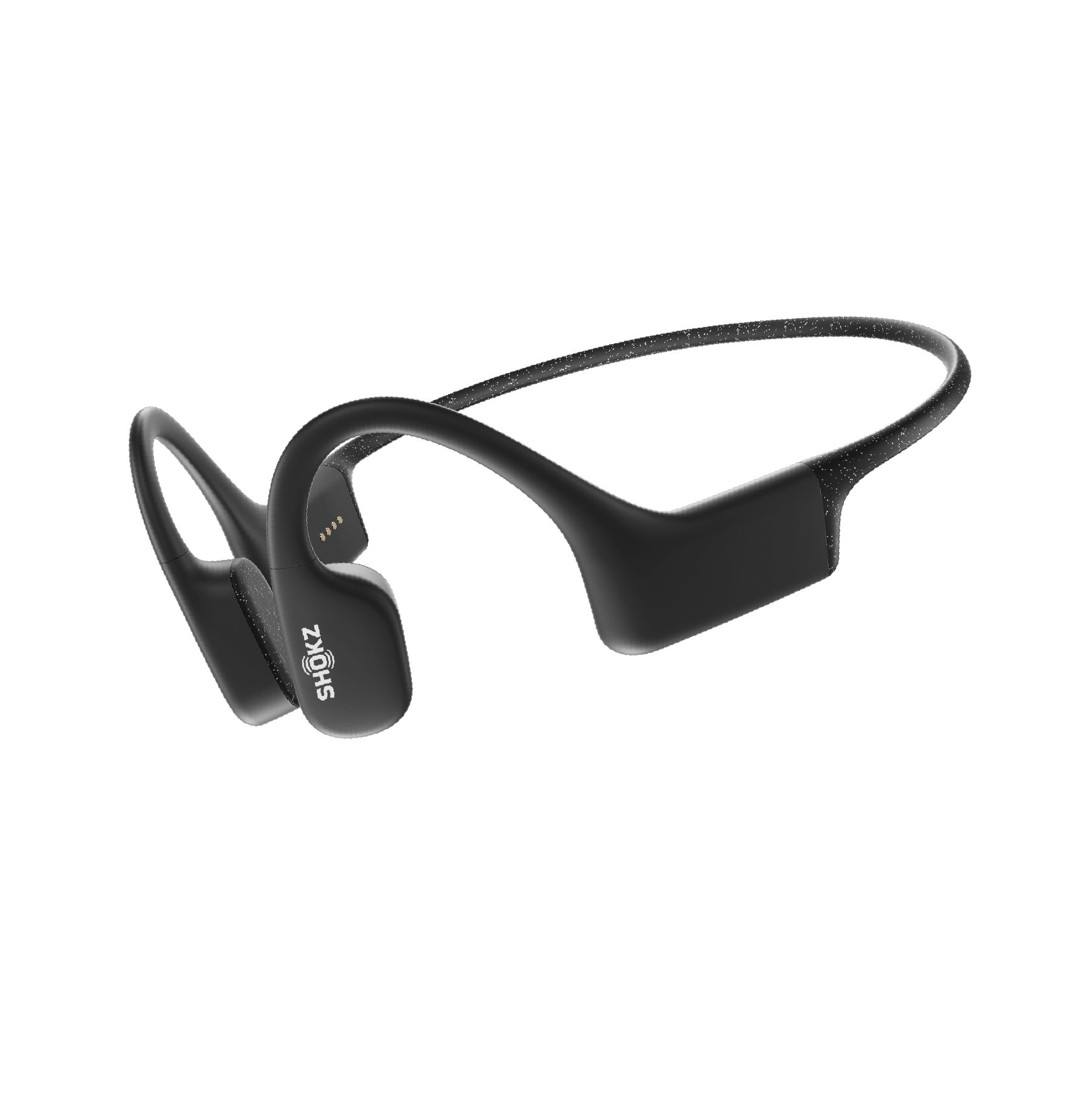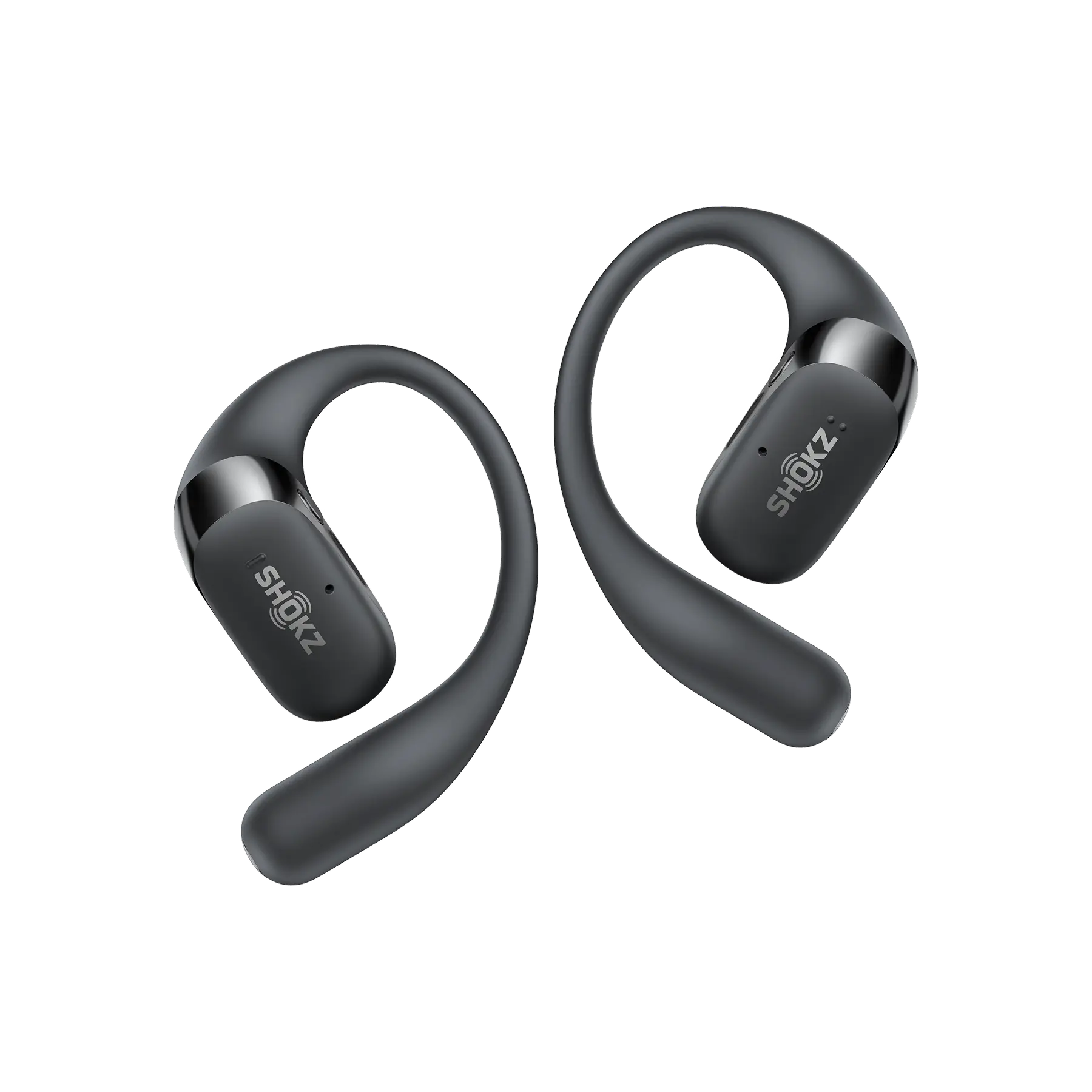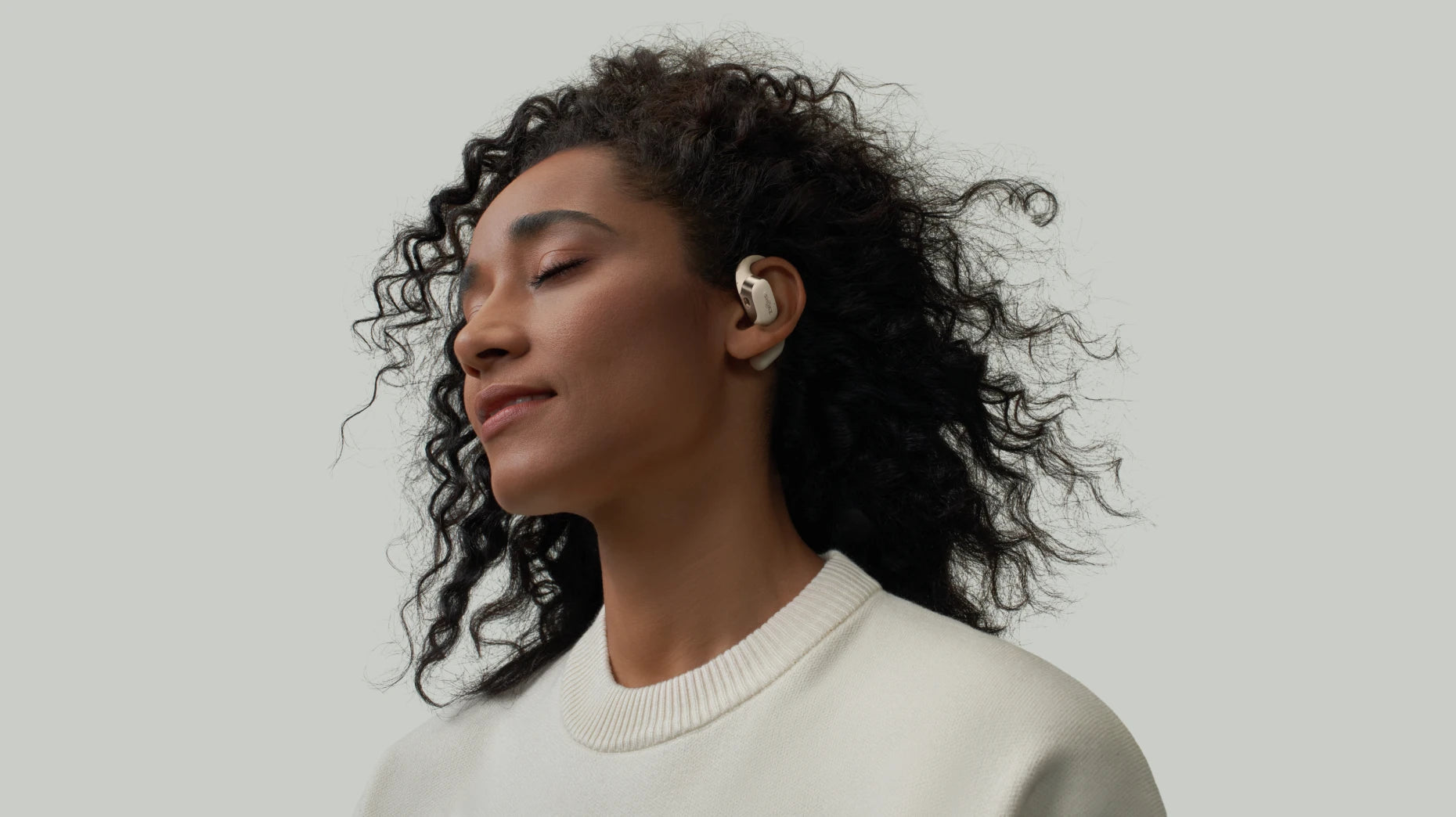Headphones, earbuds, and speakers have changed significantly over the years as engineers have strived to achieve perfect sound delivery. These days, the biggest debate among hardcore audiophiles has been the merits of air conduction vs bone conduction.
What Is Air Conduction?
Air conduction is where sound waves are transmitted through the air and into the ear canals, where they cause the eardrums to vibrate. This vibration transfers into the tiny bones in the inner ear, which sends a signal to the brain that is interpreted as sound.

Most air-conduction headphones can be categorized as open-back or semi-open headphones. Open-back headphones have an open design that lets sound escape and allows you to hear ambient noise around you. They provide a more natural soundscape, which makes them popular with audiophiles.
A good example of a product with an open-back design is Shokz air conduction headphones - OpenFit 2+. These fit comfortably on your ears and provide excellent sound without isolating you from your surroundings.
Semi-open headphones have partially open ear cups that reduce sound leakage and provide greater isolation than open-back headphones. They're mostly used in studio recording and other audio applications requiring greater sound isolation than open-back headphones. The sound quality isn't as natural as what you would find with open-back headphones, so they aren't as popular with casual listeners.
What Is Bone Conduction?
While air conduction relies on the eardrums to send vibrations to the bones in the inner ear, bone conduction bypasses the eardrums altogether. Instead of sending sound through the air and the ear canal, bone-conduction headphones send vibrations directly into the bones of the inner ear. When these tiny bones vibrate, they send a message to your brain that is interpreted as sound.
There are two main types of bone conduction. With direct bone conduction, a speaker is placed against your cheekbones or temples. The speaker transmits vibrations directly to the bones of your skull that are interpreted as sound. This is the technology seen in bone-conduction headphones such as the OpenRun Pro 2, which allows users to listen to audio without covering their ears.
Meanwhile, implanted bone conduction involves having a device surgically implanted into the bones of your skull, typically behind the ears. The device transmits vibrations directly into your bones so your brain can interpret them as sound. Implanted bone conduction devices are also called bone-anchored hearing aids, or BAHAs.
What is the Difference Between Air Conduction and Bone Conduction?
When it comes to air conduction vs bone conduction, it's important to note that neither option is "better" than the other. It comes down to personal preference and what you want from a new set of headphones. Let's do some comparisons to help you decide.
Audio Quality
When it comes to audio quality, most audiophiles will tell you that air-conduction headphones are superior. They utilize the ear's natural acoustics to deliver a broader range of frequencies and clear sound output. Meanwhile, it's easier to miss the subtle nuances in whatever you're listening to when you use bone-conduction headphones, with the bass often being particularly thin.
Sound Leakage
Both air and bone-conduction headphones are susceptible to sound leakage to some degree. Sound leakage is the term used to describe when the audio from your headphones can be heard by others around you. Generally, closed-back air conduction headsets are known to have fewer issues with sound leakage. While open-back headphones are the opposite—since the ear cups aren’t entirely enclosed.
Bone conduction headphones, while there can be sound leakage, it's not nearly as loud as what you’ll experience with open-back air conduction headphones.
Comfort
Bone-conduction headphones are lightweight and more comfortable to wear for extended periods. They sit on your temples or your cheekbones, which is less irritating compared to over-ear or in-ear headphones. On the other hand, some people find the vibrations of bone-conduction headphones a bit unsettling.
The comfort of air-conduction headphones varies from one set to the next and depends on personal preference. If you don't like the pressure of something against your ears or you think ear cups get too hot, you'll probably find earbuds or semi-open headphones very comfortable.
If comfort is a big deal for you and you don't like the idea of bone-conduction headphones, opt for an open-ear product like the OpenDots ONE. Open-ear headphones sit above the ear canals, making them perfect for anyone who doesn't like the pressure associated with earbuds or traditional headphones.
Air Conduction vs Bone Conduction: Which is Better for You?
The air conduction vs bone conduction debate comes down to personal preference. If you’re looking for crisp sound and punchy basslines, or if you need to focus and get in the zone, go for air conduction headphones. Many newer products also have superior sound quality compared to their predecessors.
However, air-conduction earphones can get uncomfortable when worn for a long period. The pads can get heated and the pressure from the band can get irritating. You’re also putting your ear health at risk. This is where bone conduction headphones shine through.
Bone-conduction headphones are more lightweight and are far more comfortable to wear compared to many air-conduction headphones. This makes them ideal for physical activities such as running or gym workouts. Since they sit on your outer ear, you are well aware of your surroundings. This is ideal and a safer choice, especially if you plan to train outdoors.
Those with hearing impairments can also benefit from bone-conduction headphones. The sound is transmitted through the bones in the skull, bypassing the outer and middle ear. This is beneficial especially for those with conductive hearing loss since they don’t have to rely on the traditional pathways used by conventional headphones for audio listening.
Best Bone Conduction Headphones and Best Air Conduction Earbuds You Can Choose
Choosing between bone conduction and air conduction depends on how and where you listen. Whether you’re training outdoors or relaxing indoors, the right pair should offer comfort, clarity, and awareness.
OpenRun Pro 2 - Best Bone Conduction Headphones
- 10th-generation bone conduction technology delivers clear and dynamic sound.
- Open-ear design keeps you aware of your surroundings—ideal for running or cycling.
- Lightweight titanium frame provides stability and long-wear comfort.
- IP55 water resistance for protection against sweat and light rain.
- Up to 12 hours of playtime for outdoor workouts.
OpenFit 2+ - Best Air Conduction Earbuds
- Air conduction design offers natural, open-ear listening without pressure on the ear canal.
- Dual drivers produce balanced, detailed sound across all frequencies.
- Soft, ergonomic earhooks stay secure during daily movement.
- Sweat-resistant build supports active lifestyles.
- Up to 11 hours of continuous listening (48 hours with charging case).
FAQs of Air Conduction vs Bone Conduction
Q1. Why is air conduction better than bone conduction?
A1. Air conduction headphones generally deliver fuller sound quality with richer bass and wider frequency response. Because they transmit sound through the air into your ear canal, they can reproduce music and speech with more natural detail. However, bone conduction headphones are better suited for outdoor safety and comfort, as they leave your ears open to ambient sound.
Q2. Can other people hear air conduction headphones?
A2. Air conduction headphones may leak a small amount of sound at higher volumes, but the effect is minimal compared to traditional open-ear speakers. Modern air conduction models, like OpenFit 2+, use optimized acoustic ports and directional sound technology to reduce sound leakage and keep audio private.
Q3. Why is conduction more effective in metals than air?
A3. Conduction is more effective in metals because their atomic structure allows vibrations to transfer energy quickly between particles. Metals have higher density and stronger atomic bonds, which makes them better conductors of sound and heat compared to air, where particles are farther apart. This principle also explains why bone conduction can efficiently transmit vibrations through solid structures like the skull.
Conclusion
Nevertheless, the debate of air conduction vs bone conduction is a matter of personal preference. Both options have their advantages and disadvantages. Experiment with a few options to find the headphones that are best for you.
For more information about the different headphones that are available, visit ca.shokz.com. Whether you prefer air-conduction or bone-conduction headphones, we will have something that suits you.
